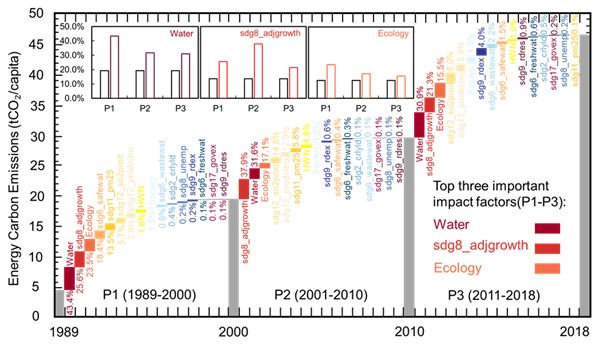Study Reveals Energy Carbon Emissions from Agroecosystems in Tarim River Basin, China
2022-09-05
Energy carbon emissions from agroecosystems produced by using diesel, oil, natural gas, and other fossil fuels in the process of agricultural production account for 17–20 % of China’s total emissions. The Tarim River Basin (TRB) is a typical and largest inland river located in the arid region of Northwest China. TRB has a large amount of water for agricultural irrigation and the rapid development of agricultural modernization. Therefore, its water resources are closely related to the carbon emissions of agricultural energy consumption. If the production model of the agricultural sector turns to modern agriculture, marked by mechanization, it will not only improve agricultural production efficiency and farmers’ incomes but also improve the efficiency of water resource utilization and promote the protection of water resources, thereby forming a more harmonious human-water nexus. Therefore, exploring the changing trends and determinants of energy carbon emissions from agroecosystems in the TRB based on human-water nexus has certain reference significance for the achievement of China's dual carbon goals.
Based on the Bayesian model and Tapio model, researchers from Xinjiang Institute of Ecology and Geography, Chinese Academy of Sciences, selected the evaluation indicators provided by Sustainable Development Goals (SDGs). They quantitatively evaluated the trends of energy carbon emissions from agroecosystems in the TRB from 1989-2018, and explored the main drivers of energy carbon emissions from agroecosystems. In addition, the development trend of energy carbon emissions from agroecosystems in the future was predicted.
The results indicated that: from 1989 to 2018, the energy carbon emissions in the TRB increased (0.75 tCO2/capita per year) because of the continuous development of the economy dominated by agricultural expansion. Although technological progress (sdg9_rdex) has little impact on energy carbon emissions in the short term, its impact cannot be ignored in the long run.
In addition, the energy carbon emissions in the TRB will peak in 2030 (66.08 tCO2/capita), and then decrease in following years. The continuous increase in energy carbon emissions in the TRB has greatly increased the difficulty for achieving the dual carbon goals. Energy carbon emissions from agroecosystems in the TRB have increased year by year. However, with the continuous improvement of water resource utilization efficiency and the decoupling effect of the economy and the ecological environment, the energy carbon emissions from agroecosystems will reach a peak and achieve carbon neutrality under the reasonable control.
The results were published in Applied Energy under the title "Analysis of energy carbon emissions from agroecosystems in Tarim River Basin, China: A pathway to achieve carbon neutrality".
Article link: https://www.sciencedirect.com/science/article/pii/S0306261922011114?dgcid=coauthor

Fig. 1 The contribution of 16 factors affecting energy carbon emissions to state changes during P1 (1989–2000), P2 (2001–2010), and P3 (2011–2018).

Fig. 2 Schematic of energy carbon emissions prediction.



